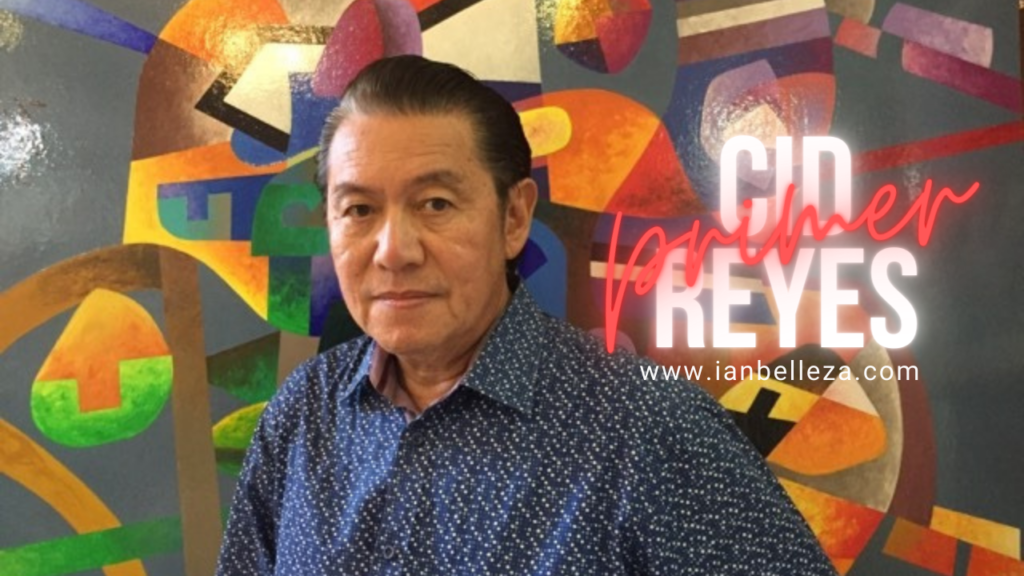
Cid Reyes is the rare combination of artist and art critic who has produced a consistent body of works in both fields. After graduating with a Bachelor’s degree in Liberal Arts at De La Salle University, he received a grant from the Italian government to study painting at the Academy of Fine Arts in Rome. Thence, he pursued his art history studies in England at the City Lit Institute in London.
Returning to the country, Cid had a successful career as an advertising Creative Director with a multinational agency, where, upon retirement, he was presented with a Lifetime Achievement Award by the Creative Guild of the Philippines, of which he was president in an unprecedented three-year term.
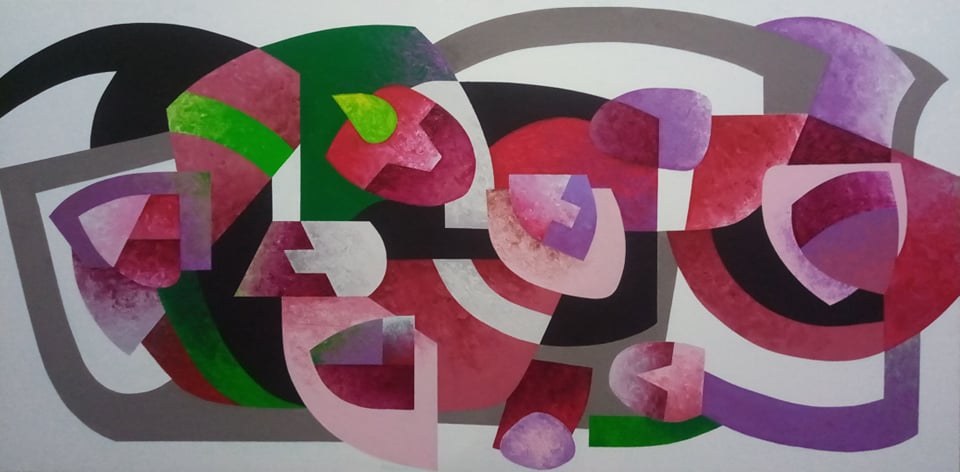
His first solo show was held at Joy Dayrit’s Print Gallery, followed through the years by shows at Solidaridad Gallery, The Hyatt Hotel, West Gallery, The Drawing Room, Ricco-Renzo Gallery, and Galerie Astra, raking up a total of 17 solo shows, to date.
As art critic, Cid’s record of achievements commenced with his winning the Grand Prize in an AAP art criticism competition, sustained by the landmark book of interviews, “Conversations on Philippine Art,” a decade-long (1995-2004) weekly art column, “Gallery Hopping,” in TODAY, where he wrote over 500 art reviews; coffeetable books for National Artists Arturo Luz, BenCab, J. Elizalde Navarro, and Napoleon V. Abueva, and scores of art books on Malang, Augusto Albor, Lao Lianben, Charito Bitanga, Valeria Cavestany, Edwin Wilwayco, the Philippine Art Awards’ “Decade of Achievement,” and the Metrobank’s art competiton, “MADE of Gold.”
As well, Cid co-authored “Tanaw: The Central Bank Art Collection,” “Herencia: The BPI Art Collection,” His forthcoming books are “Silanganan: The FEU Art Collection,” and books on Ramon Orlina and Betsy Westendorp.
The Art Association of the Philippines (AAP) presented Cid with a “Best in Art Criticism Award.”
In 2015, Cid Reyes was recipient of “Most Outstanding Kapampangan in the Arts” presented by the Government of Pampanga.
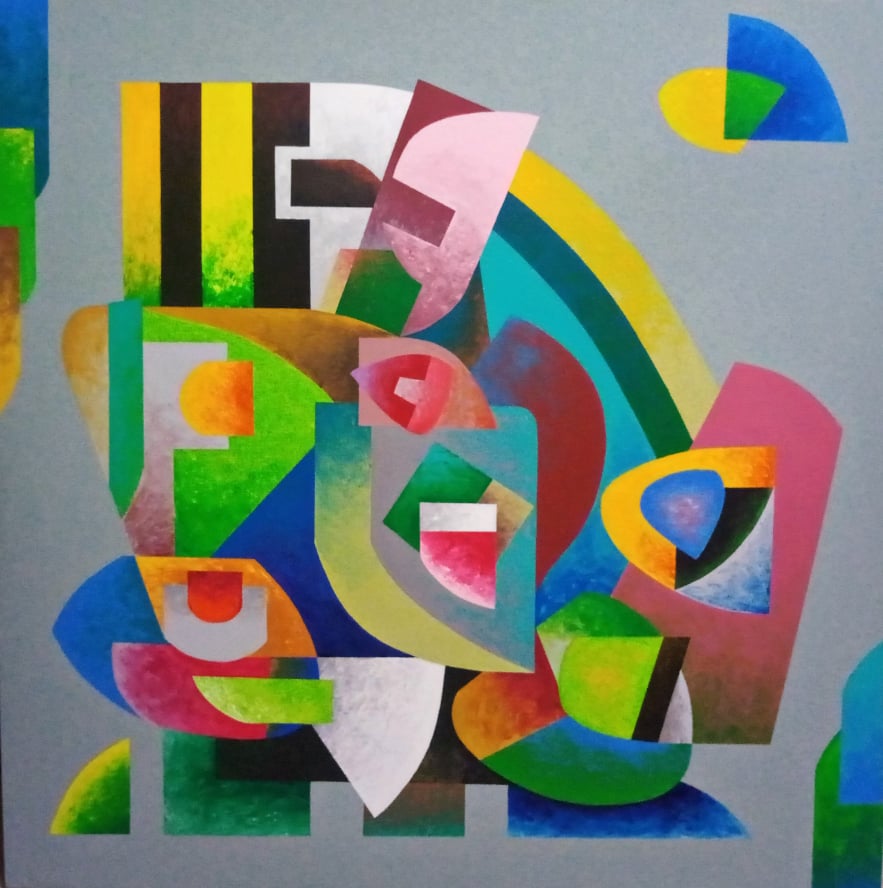
What inspired you to become an artist?
The romantic notion is that an individual is born an artist, or not at all. Growing up, I frankly had no idea what I would be in the future, and this realization actually instilled, in my youthful years, a deep-seated fear in me. However, I allowed myself to be open to all the realities of my life. For instance, my grandparents – with whom we lived upon the widowhood of my mother – had a large library of books. In this veritable paradise of learning, my young mind opened up to the art and craft of the finest writings – that eventually led me to wanting to be a writer myself. As to my vocation as an artist, the unexpected discovery, during my college years, of the legendary Luz Gallery which then showed the best of Philippine art – in fact where many of the now acknowledged masters first exhibited their works, aside from the PAG or Philippine Art Gallery of Lydia Arguilla-Salas – is critical to my wanting to be a painter.
What was your first exhibit like?
My first solo exhibition was held way back in 1969 at the Print Gallery established by the late fictionist Joy Dayrit. I can still remember that I came after the show of Angelito Antonio. Even then my works were already aligned along the idiom called Abstract Expressionism. Lots of splashes of paint all over the canvas, channelling Jackson Pollock and Willem de Kooning, and Jose Joya, of course!
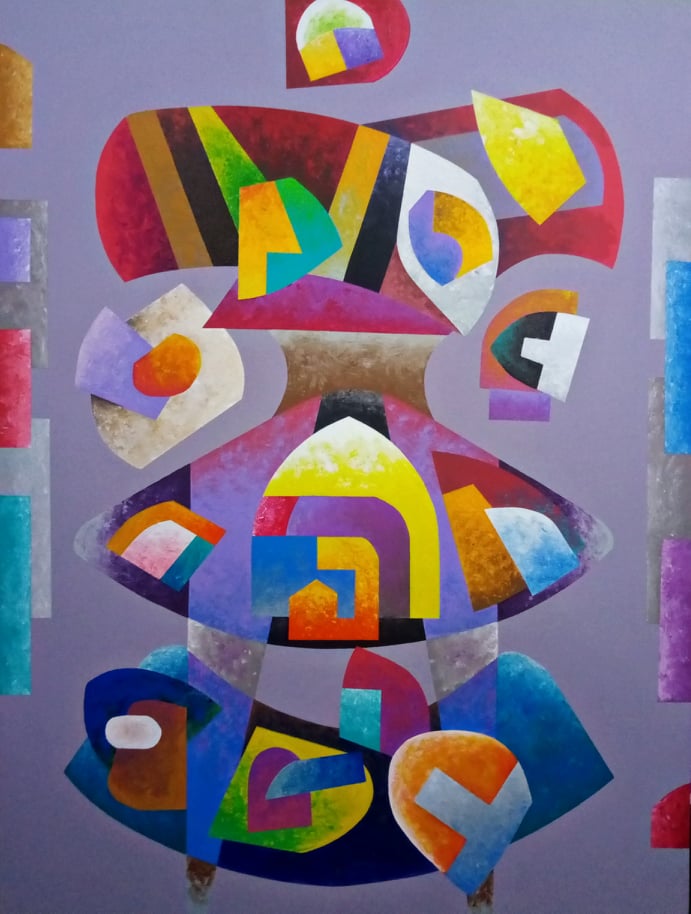
What are you currently working on?
Right now, I am continuing with my geometric, hard-edge style that was the idiom behind my recently concluded online show, “Rhumba: Geometry in Action.”
What is your process like?
The process is fairly simple. I design the painting along an architect’s floor plan. The configurations of shapes are already worked out, together with the color orchestration. All I need to do now is to convert those shapely plans into large scale canvases.
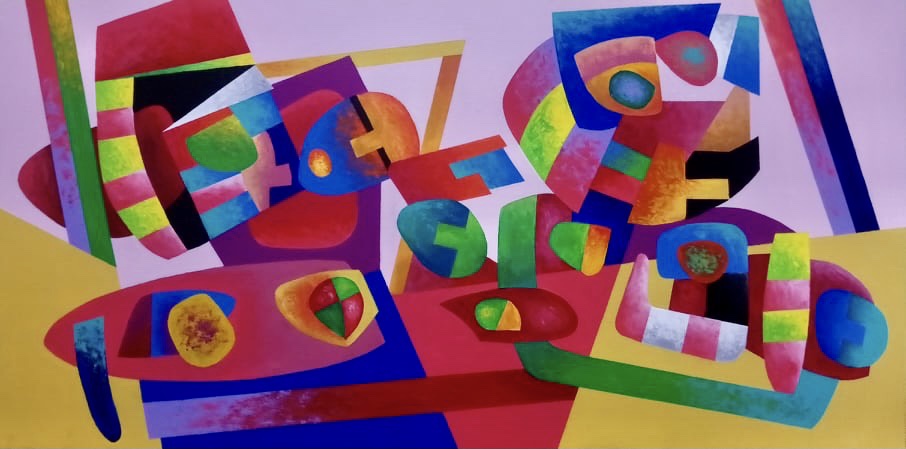
What was the most valuable thing you learned doing your art?
The most valuable thing I learned doing my art is to always connect with my instinct. Trust it completely, and not to be waylaid by doubts or other people’s comments.
What is your favorite piece you’ve created?
My favourite piece is the work titled “Rhumba” – the dance inspiration of the series. For this reason, it is NFS – or Not for Sale.
What is your favorite piece by another artist?
My favorite piece by another artist is “Genesis” by National Artist Hernando Ruiz Ocampo. The tapestry curtain of the Cultural Center of the Philippines (CCP) was based on it. For me, “Genesis” is perfection itself.
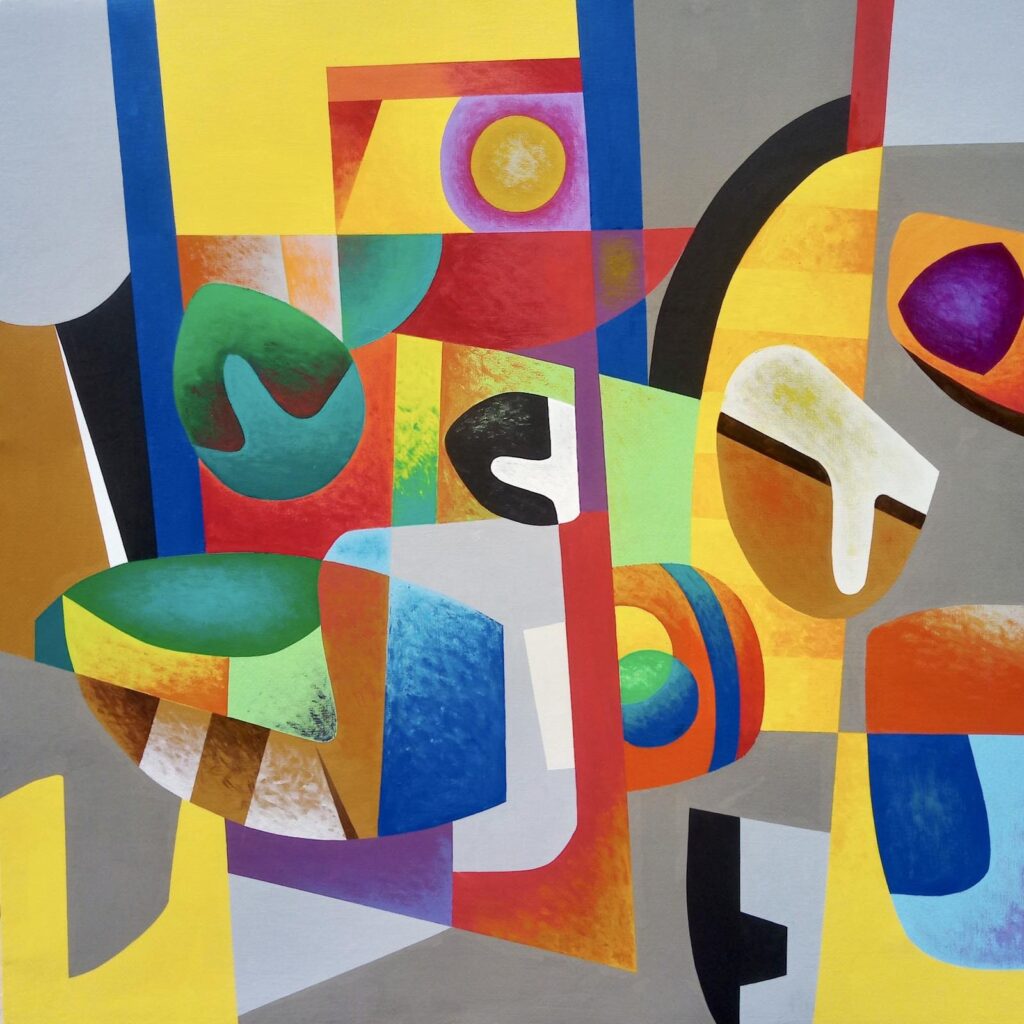
Why do you work in the medium that you do?
I work with acrylic for the simple reason that I could never be comfortable with oils. This is obviously not an indictment of oils as a medium, but rather of myself as an artist. Let’s just say: I get the best results I want from acrylic.
What is your favorite place to create in?
Not to be mystical about it, but my favorite place to create in, is in my imagination. That’s where my mind’s eye sees it first. Not on a sketch pad. For me. The imagination is where my artistic laboratory resides; where visual ideas are first born.
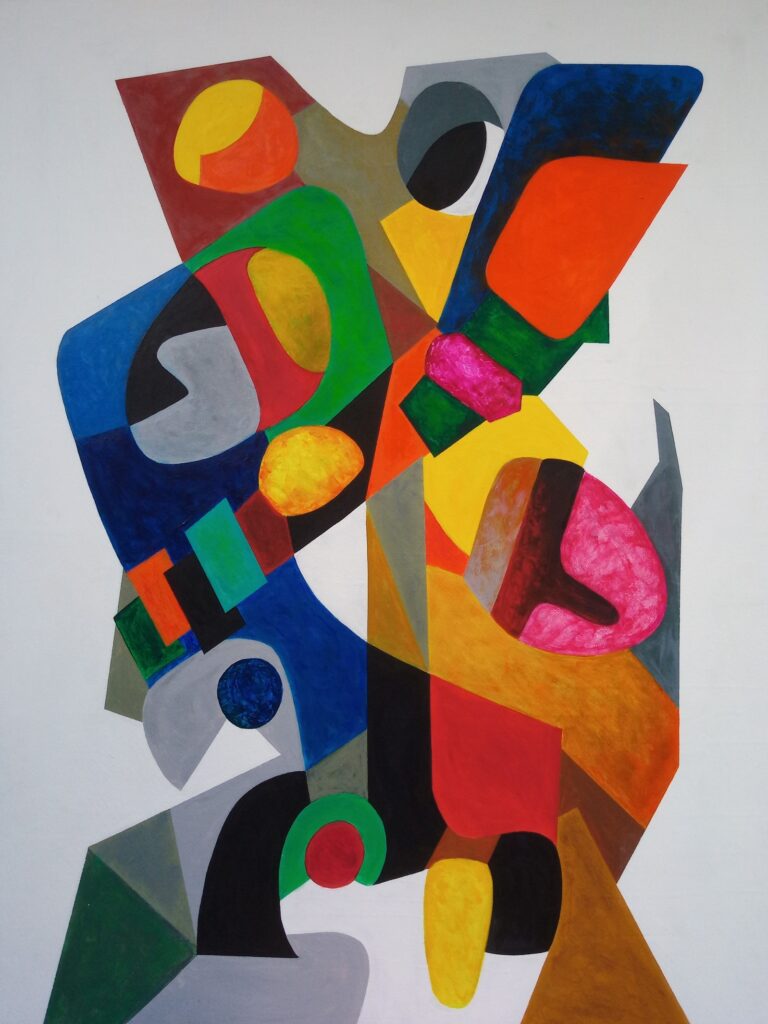
ARTIST STATEMENT
I am always asked: “Are you a critic who paints? Or, are you a painter who writes?” Truly for me, it’s like asking: “Which came first: the chicken or the egg?” I am always honest to say: “One begot the other.” I feel, modesty aside, that I am a better critic because I paint. And hopefully, I paint better because I have a critical, questioning mind. But practice-wise, I leave the critic outside the studio door whenever I am working on my paintings. Inside the solitude and silence of my studio, I trust and commune only with my instinct.
At the core – in my DNA – I have always been an abstractionist, though exposed to classical and conservative painting. As such, I have explored, both out of curiosity and impelled by necessity, all types and approaches to abstraction. From gestural painting to minimalism to hard-edge geometry. Abstraction is inexhaustible, boundless, and since it is not hindered by visible reality, it is without limit. The limitation comes only with one’s imagination.
